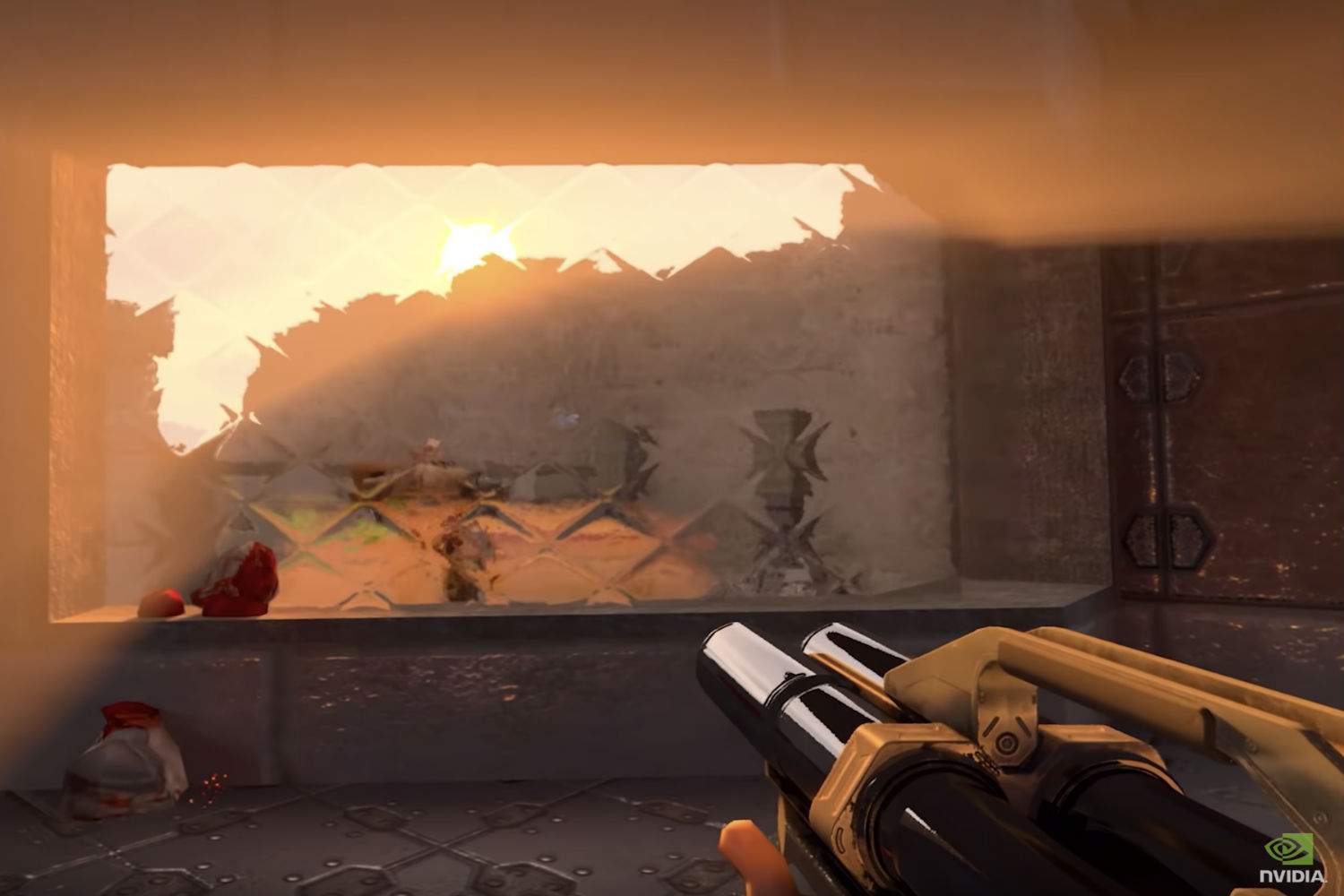
What happens when you run a 22-year-old PC game on one of Nvidia’s new RTX video cards? You end up with the best argument yet made for the card’s RTX real-time ray tracing feature.
It’s a strange turn of events. Ray tracing, which offers a physical simulation of the way light bounces instead using static, pre-baked lighting, opens a new frontier for realism. Its introduction first in Battlefield V, and later in games like Metro Exodus, tried to make that point. They failed. Ray tracing inflects a huge performance penalty for a negligible benefit in image quality.
The problem, I found, is that Battlefield V has too much going on. The ray traced reflections are awesome, but they’re hard to notice when gunning down Nazis in a beautifully detailed forest. The action is too fast, the spectacle too great, to make the benefit stand out.
Quake II is certainly fast, but it’s no longer a spectacle. It looked great back in 1997 but, like so many 3D games released around the turn of the millennia, it hasn’t aged well. The dark, blocky environments look crude and flat by today’s standards, even with updated textures.
But the new, ray traced release? It’s not so bad. See for yourself.
It’s no Battlefield V, of course, but the effect is compelling. The simplicity of Quake II’s geometry, textures, and levels means the change to lighting comes to the forefront. I struggle to notice where ray traced lighting is used in Metro Exodus, but in Quake II the effect is plain and, in a strange way, beautiful.
This is what Nvidia needed. I don’t think Battlefield V convinced anyone that RTX ray tracing is necessary. The Quake 2 demo might. It showcases a look and feel that’s impossible without it.
Might indies lead the ray tracing revolution?
Choosing Quake 2 as a ray tracing demo also benefits Nvidia on another level. Tony Tamasi, Nvidia’s VP of technical marketing, notes the project started small.
“The lead of Q2VKPT, Christoph Schied, started working on de-noising real-time path tracing when he interned with Nvidia in 2016,” Tamasi told Digital Trends. “Nvidia was thrilled to once again work with Christoph after he and his university colleagues released their path traced Quake II in January.”
Quake 2 is also open source and uses a “Vulkan-based real-time path tracer.” Throw these facts together, and the result is a demo that suggests ray tracing doesn’t need to be reserved to AAA studios like DICE.
Anton Yudintsev, CEO of Gaijin Entertainment – which is currently developing Enlisted, a squad-based MMO shooter that will support RTX ray tracing – agrees. “In itself, [
The biggest obstacle, Yudinstev said, will be changing the workflow of studios to embrace ray tracing. “Things like that don’t change that fast. [
A look at the games that plan RTX ray tracing support hints that smaller studios are embracing change more quickly. While Battlefield V has served as the feature’s headliner, and the next Call of Duty will also pick up the ray traced torch, these big releases are outnumbered by those from small and mid-sized studios. Examples include 4A Games’ Metro Exodus, Gaijin Entertainment’s Enlisted, and Piranha Games’ Mechwarrior V: Mercenaries. Then there’s Stay In The Light, an indie game just released into early access that, in the developer’s own words, “requires real-time
Nvidia has encouraged experimentation with its DXR Spotlight contest, and the company says it’ll continue to promote indie developers through its Indie Spotlight Program.
The reminder of 2019 will be crucial for Nvidia and anyone who owns an RTX video card. Many new games will launch with support and the green team’s indie outreach may start to pay off. The results should be beautiful, even when photo-realism takes a back seat.
Editors' Recommendations
- Nvidia is bringing ray tracing and DLSS 3 to your car
- Nvidia’s DLSS 3.5 update flips ray tracing on its head
- AMD RX 7900 XTX: we tested ray tracing in 14 games, with mixed results
- RTX-washing old PC games makes for an impressive tech demo, but not much else
- A Plague Tale: Requiem heading to GeForce Now with ray tracing



